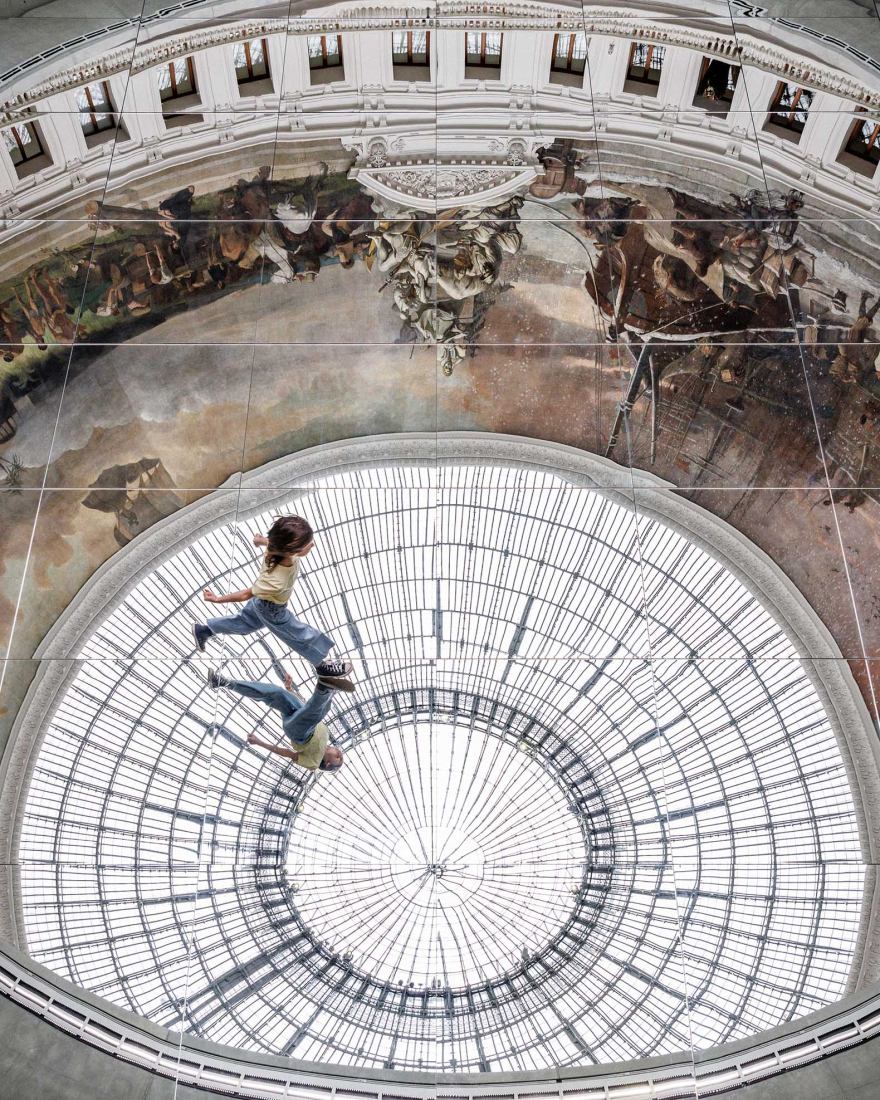In conjunction with the exhibition, Kimsooja has been given carte blanche as part of “Le monde comme il va” exhibition. Her installation in the Rotunda of the Bourse de Commerce is both monumental and ethereal: she uses an immense circular mirror placed on the ground to invert the entire architecture of the Bourse de Commerce, and the order of the world with it. Kimsooja is also taking over the 24 display cases in the Passage and the museum's lower level, with works and video installations that address her favourite themes: identity, borders, memory, exile, movement, and weaving.

To Breathe Constellation, by Kimsooja, 2024. Photograph courtesy of Pinault Collection.
Since the late 1970s, her work has asserted itself, on the international art scene, as an essential, universal experience. After studying painting in Seoul, she distanced herself from all art teachings and practice, embracing everyday gestures such as sewing to explore the issues of identity, involvement, individual and collective memory, and the individual’s place in the world.
The mirror used to cover the floor of the Rotunda of the Bourse de Commerce plays a similar role to that of the needle or her body.
Kimsooja transfigures the architecture into a dizzying, levitating space, an inversion of the world in which the sky in the glass dome becomes a deep abyss, thereby altering our perception of the space and our sense of the gravitation of bodies. She hollows out the architecture and leaves space to generate new sensations and perhaps also the sense that our body acts like the one in Needle Woman (2): an axis that binds the sky to the earth.

To Breathe Constellation, by Kimsooja, 2024. Photograph courtesy of Pinault Collection.
In resonance with the thinking of Tadao Ando and his quest for an architecture of the empty and the infinite, Kimsooja has covered the floor of the Rotunda with a mirror. She thereby, transforms an artwork into something more than just an object, an installation, or an image; it instead, becomes an essential experience. Between appearance and disappearance, contemplation and astonishment, light-headedness and amazement, the thus-transfigured space is no longer, in the words of François Cheng, “an inert presence; it is filled with breaths that connect the world we can see to the one we cannot”.The mirror that Kimsooja offers us also moulds the space into a gathering, the possibility of a totality that invites us all to create a world together.
In the performance in 1997 that made her famous, she spent eleven days travelling across Korea perched atop a lorry loaded with bottaris, the traditional, shimmering Korean fabric bundles used to mark major events in people’s lives, from birth to marriage to death. As a nomadic artist, Kimsoojametaphorically uses her own body like an anonymous, almost invisible presence whose immobility and verticality become a kind of needle that threads through the fabric of the world.

For the first time, Kimsooja will screen her complete series of 16mm films titled Thread Routes in the Auditorium at the Bourse de Commerce, starting on 20 March. In six chapters, all were filmed in different regions of the world, the artist creates a cultural mosaic around fabrics in which human relations, gestures, artisanal know-how, architecture, nature, and agriculture all become interwoven. Part documentary and part visual anthropology, Thread Routes highlights weaving and its metaphor as a contribution to the world. This cycle of films forms an epic poem based on gestures both minimal and virtuous, as seen by Kimsooja.
NOTES.-
2. See Kimsooja, A Needle Woman, 1999–2000 (page 7).


































